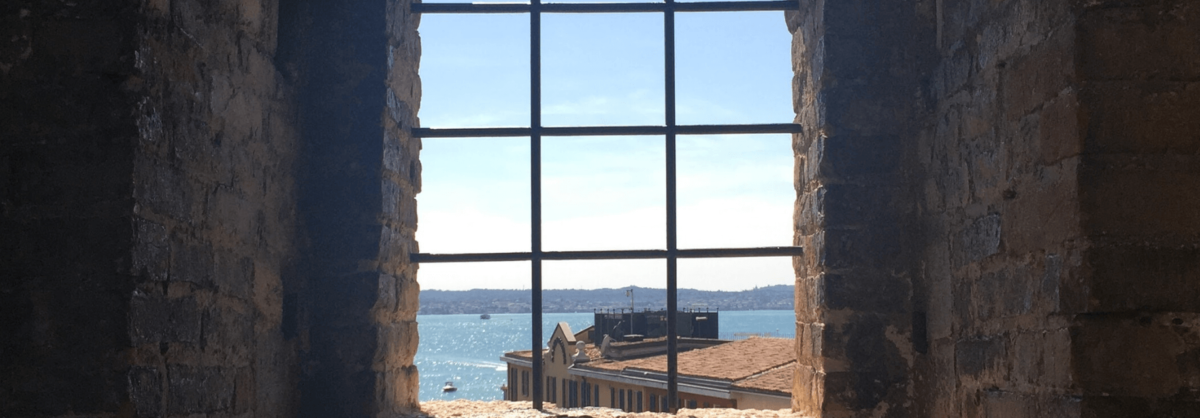This article was originally published in 2020
“My eyes smart so much with crying, wind and fatigue that I must close them and lift up my heart… God is our all indeed. If sufferings abound in us, his Consolations also greatly abound, and far exceed all utterance… If I could forget my God one moment at these times, I should go mad.”
—Elizabeth Ann Seton, journal entries while quarantined in Italy, 1803.
In response to the spread of the coronavirus, abroad and at home, many of us are in imposed or self-imposed quarantine.
The word quarantine arose in the mid-17th century: from the Italian quarantina “forty days,” from quaranta “forty.”
One of the earliest mentions of the practice is found in the Book of Leviticus, generally agreed to have been written between the fifth and eighth centuries BC.
But the word came into general usage in the fourteenth century with the spread of the Black Death, as the bubonic plague was known, along the Mediterranean coast. The goal was originally to protect coastal cities from plague epidemics.
St. Elizabeth Ann Seton experienced quarantine twice in her relatively short life.
In 1799 her father, Dr. Richard Bayley, was appointed Chief Medical Officer at the Quarantine Station on Staten Island in 1799. He contracted yellow fever in 1801, suffered excruciating pain for a week, and died with Elizabeth at his side.
Two years later, she embarked to Italy with her husband William (not, at the time, a believer) and their eight-year-old daughter Anna Maria. William was sickly, and the family hoped the restful ocean voyage and balmy Mediterranean air would do him good.
Instead, as soon as they landed in Livorno (then known as Leghorn), Italian authorities decided that William appeared to have yellow fever himself. The family was whisked away via canal some distance from the city and installed in a lazaretto—quarantine station—located in a stone tower.
A “lazaretto” is a place designated to house lepers and diseased poor persons (the Italian lazar actually means leper). The concept first arose in the 1540s around Venice: well-known as a port for plague-infested ships arriving from the East.
The word derives from the Biblical proper name Lazarus—the brother of Martha and Mary who, in the well-known Gospel story, Christ raised from the dead
The dank, cold lazaretto to which the Setons were confined consisted of bare walls, a brick floor, and windows through which the wind whistled, bringing dust and debris that sent William into fits of racking coughs.
Faithful friends brought the family mattresses, food, and wood for the small fireplace. They spent 25 days in seclusion during which William’s condition steadily worsened. Almost miraculously during this time, however, he also came to accept Christ as his Lord and Savior.
They were released on December 19 and immediately needed to make an arduous 15-mile carriage trip. William died nine days later, giving thanks for Christ’s mercy.
Forty days is the time during which an infection supposedly runs its course. Lent also lasts 40 days, based on the time Christ spent in the desert being tempted by the devil.
The connection is interesting. A quarantine purports to purify the body. Lent by contrast constitutes a kind of purification period for the soul; a mini-quarantine from the worldly lust for power and possessions during which we’re invited to give ourselves ever more fully to the Father’s will alone.
St. Elizabeth Ann Seton spent her own 40 days in the desert, suffering bodily mortifications, watching the love of her life wither and die, tempted we can surmise by anxiety and fear on behalf of her daughter.
Christ’s time in the desert formed him for his vocation of casting out demons and healing, including raising Lazarus from the dead.
St. Elizabeth Ann Seton’s experiences with quarantine perhaps helped form her vocation as well.
Without suffering through the death of first her father, then her husband from yellow fever, would she have attained the full richness and depth of her faith?
Without the mental and spiritual agony, the isolation of those 40 days in her lazaretto, would she have had the strength to return to the U.S., convert to Catholicism, endure the subsequent censure and estrangement from her in-laws, founded the Sisters of Charity of St. Joseph and establish what is generally considered to have been the first Catholic schools in America?
We can’t know of course. But as we increasingly abstain from large gatherings, travel, and all inessential activities outside our homes to help stem the tide of the coronavirus, we can know we are in solidarity with St. Elizabeth Ann Seton, and with Christ.
We can know this Lent that the whole world has become a temporary “lazaretto.”
In it, we are called to pray deeply, love with all our hearts, and ponder the words we heard on Ash Wednesday: “Remember you are dust and to dust you shall return.”
This article was originally published in 2020
HEATHER KING is an essayist, memoirist, blogger, speaker and Catholic convert. She has authored numerous books, among them Holy Desperation; Parched; Redeemed; Shirt of Flame; Poor Baby; and Stumble: Virtue, Vice and the Space Between. She contributes a monthly column to Magnificat, and writes a weekly column on arts and culture for Angelus News. Heather lives in Los Angeles and blogs at www.Heather-King.com.
